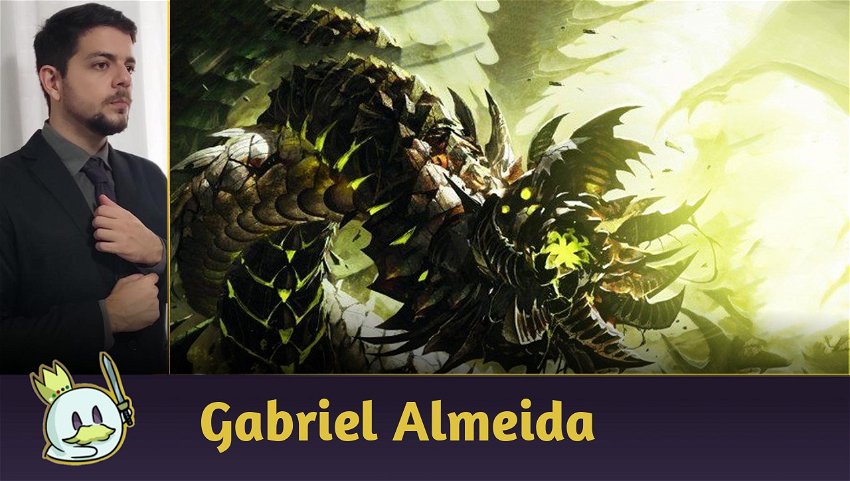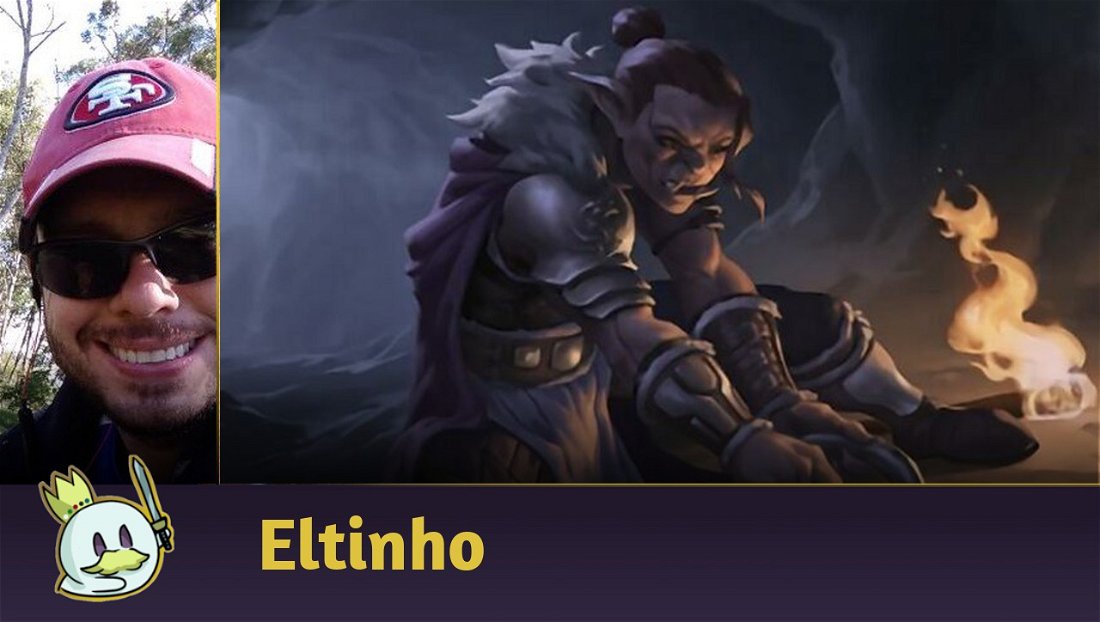What is Deathtouch?
The rulebook says that Deathtouch is a static ability where a creature with toughness greater than zero that has taken damage from a source with Deathtouch since the last time "state-based actions" were checked, will be destroyed.
Okay, but what does that mean?
State-based actions are in-game actions that happen automatically in certain situations and don't go on the stack. In the rulebook, this action is regulated in article 704 and following.
We don't need to go into much detail about this in the article, you just need to understand that when a creature with Deathtouch deals damage, regardless of toughness, the opposing creature dies.
For example:

Player 1 attacks with Ashnod, Flesh Mechanist. Player blocks with Adeline, Resplendent Cathar. Even though Adeline has 4 toughness, she will be destroyed due to Ashnod's deathtouch,
So far, there are no major complications. But we will see some interactions with other abilities.
Trample and Deathtouch
A fairly common interaction is a creature with deathtouch and trample performing an attack.

Let's assume that you, for some reason, cycled the card Titanoth Rex and put a counter on Atraxa, Grand Unifier. Your opponent blocked Atraxa's attack, using Ao, the Dawn Sky. You can assign one of combat damage to kill Ao, as Atraxa has deathtouch. With that, all the other 6 damage it would deal is dealt to the opponent.
Trample, Deathtouch and Indestructible
Continuing with the assumption that you trampled Atraxa, but now your opponent, in addition to Ao, also has an Archangel of Wrath on the field and double blocks with both cards.
Now you can distribute 1 damage to Ao, 1 damage to Archangel and the rest to the opponent. This rule still applies even if blocking creatures have indestructible. They will not be destroyed, but damage can be distributed as if they were.

Deathtouch and First Strike
Here is an interaction with no mystery. First Strike makes the creature deal combat damage before the creature without First Strike, so the combination of Deathtouch + First Strike is often quite useful, as it makes it difficult for the creature to be blocked efficiently.
Equipping a Basilisk Collar on Thalia, Guardian of Thraben will allow her to attack freely against big blockers.
But we can take a direct example that already has both abilities, Glissa, the Traitor was well known in Commander and gave a lot of headache.
Deathtouch and non-combat damage
Taking advantage of the fact that I already mentioned the Basilisk Collar, it is worth remembering that it was one of the most popular cards for the use of deathtouch interactions and out-of-combat damage. Equipping a Basilisk Collar on Walking Ballista is extremely deadly.
Deathtouch doesn't require the damage dealt to be combat damage, so removing a counter from Walking Ballista equipped with the Collar is enough to kill creatures like Cultivator Colossus without relying on combat.
How to face creatures with Deathtouch?
Ignore them
Well, creatures with deathtouch generally tend to have less power and toughness than creatures without deathtouch, so a reasonable method is to just ignore them if the opponent is using them aggressively.
Of course, this generally won't be a viable strategy unless your opponent is playing poorly.
Use creatures with evasion
If First Strike with Deathtouch is an interesting combination, a creature with only deathtouch against one with First Strike ends up being useless in combat. As the creature with First Strike will not give them opportunity to deal damage, it will remain intact.
If you are the beatdown, creatures with Flying and derivatives can be very useful to "escape" from creatures with deathtouch.
Removals
You can't use the famous "dies to Doom Blade" here, as we have many creatures with deathtouch in black, escaping this removal. But the idea is this, if the creature is not on the battlefield, there is no danger. Incidentally, interacting with the opponent's threats is something that should be commonplace in the game.
Almost all good decks have some way of removing cards from opponents.
That said, keep in mind that enchantments and equipment also give deathtouch to creatures, so it's good to always have a Naturalize or Disenchant available.
Famous cards with Deathtouch
Some cards with this ability became very popular at a certain point in history, either because they played in a competitive deck, because they were popular in Commander or some other similar reason.

Atraxa, Praetor's Voice and Acidic Slime are quite popular within Commander. The deathtouch ability is certainly not the main reason for this, but undoubtedly, it is the icing on the cake for both cards that have or have had great success at the Commander tables.
Wurmcoil Engine is a strong card within Modern's Tron deck. Here the most important part is the fact that it becomes two other creatures when destroyed, but believe me, the Deathtouch on the 3/3 creature is extremely annoying for any opponent that has to deal with it, being a blocker and a very efficient attacker.
Baleful Strix is well known to Legacy players. It comes in with the ETB effect of drawing a card and is still a threatening blocker, despite its small body, as it has Deathtouch in addition to the flying, it can block many creatures in the format.
Conclusion
Surely, you've seen the deathtouch ability, it's extremely common within the game and new cards that have it are released in every set.
I hope the rules were clear and that you enjoyed the article.
Any questions, just ask in the comments!














— コメント 0
, 反応 1
最初にコメントする